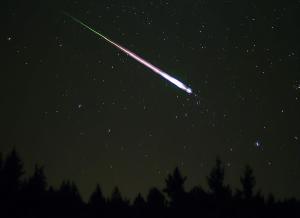Blog
Synthetic Tracking
18 January 2014
 Wikipedia user Navicore
Wikipedia user NavicoreWhen the Chelyabinsk meteor hit Russia last February, it was a demonstration of the very real threat of space rock impacts. Not the “Run for the hills! We’re all gonna die!” threat, but the fact that sizable impacts can occur, and it might be a good idea to keep an eye out for them. Although we have programs in place to look for some of these, the real challenge is finding the small and fast rocks heading our way. Like Chelyabinsk, we typically never see them coming until they hit our atmosphere.
Small in this case is around 10-20 meters. Chelyabinsk was on the higher end of that range. The challenge with objects of this size is that they tend to be fairly dim, so you need a relatively long exposure to determine their position with any accuracy. You also need to make multiple long exposures over time to determine their path. By the time the thing is close enough to get good data on it, it may be too close to brace for impact.
Now a new paper in the Astrophysical Journal presents a new method that could make finding smaller meteors easier.1 The authors call this method “synthetic tracking.”
Instead of taking a long exposure and looking for the trail of motion, synthetic tracking takes a series of short exposures. Any one of these isn’t sufficient to detect a small object, but the images are then shifted and compared to look for moving objects. So instead of taking a long exposure the short exposures are computationally compared to synthesize a long exposure. Hence “synthetic tracking.”
The advantage of this method is two-fold. The first is that the analysis can be done in near real-time. The second is that the short exposures mean less noise in your data. The authors used their method to observe two known small asteroids, and they found that the signal-to-noise ratio is increased by a factor of 10 over previous methods. This means objects as small as 7 meters have a good chance of being observed.
So perhaps we’ll see the next impact meteor before the dash-cams do.
Shao, Michael, et al. “Finding very small near-earth asteroids using synthetic tracking.” The Astrophysical Journal 782.1 (2014): 1. ↩︎